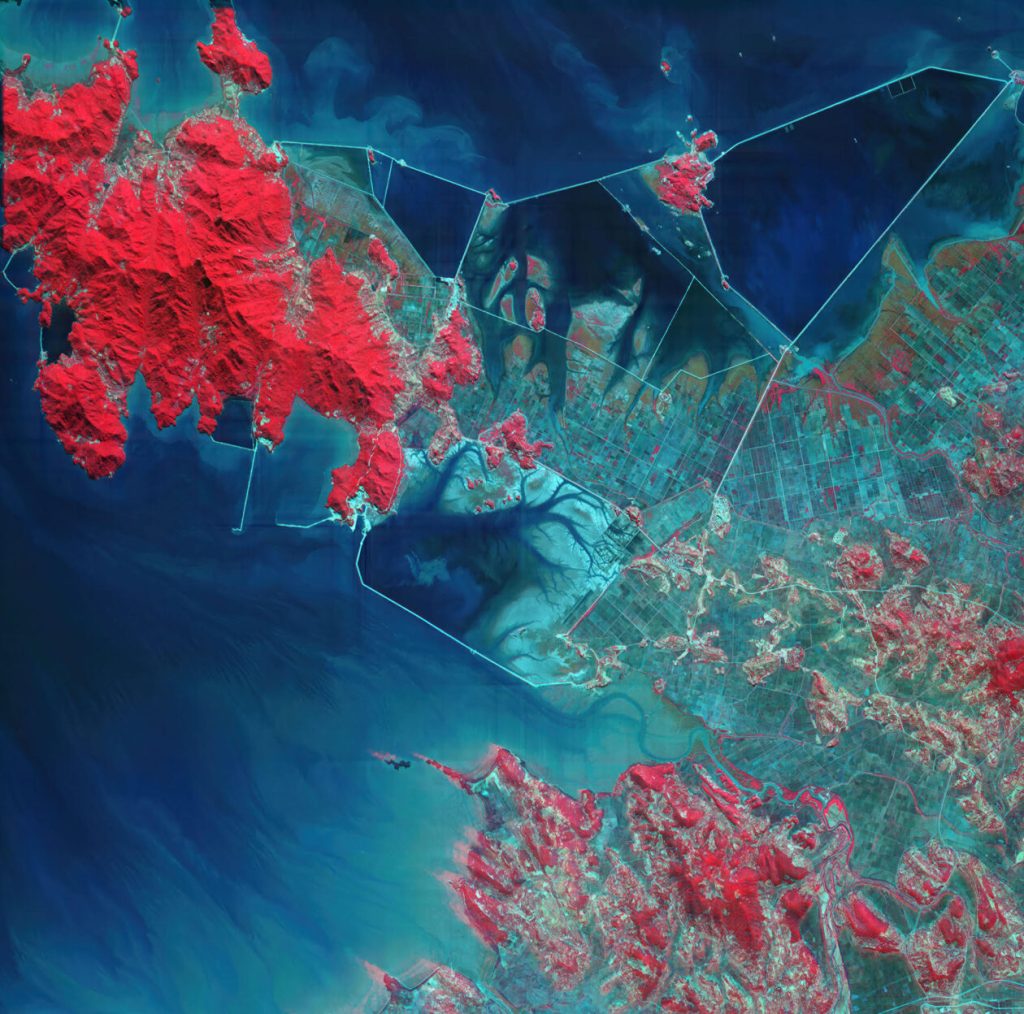Xplore Unveils Detailed Satellite Imagery of North Korea, Showcasing Technological Advancement
In a significant milestone for the American space industry, Bellevue, Washington-based company Xplore has released a striking hyperspectral image of North Korean territory captured by its XCUBE-1 satellite. The image, unveiled nine months after the satellite’s launch, represents a major achievement in commercial space technology and demonstrates the growing capabilities of private companies in the realm of Earth observation. The color-coded imagery, displayed in visible and near-infrared wavelengths, reveals remarkable detail of the North Korean landscape, including semi-submerged rice paddies, fish farms, and salt flats. This level of detail from a commercial satellite highlights how advanced imaging technology is becoming increasingly accessible beyond government agencies, opening new possibilities for environmental monitoring, agricultural assessment, and security applications.
The public reveal took place at the Seattle Space Superiority Summit held at the Museum of Flight, where Xplore’s co-founder and chief operating officer, Lisa Rich, presented the imagery to attendees. “This is a big reveal for us today,” Rich stated, emphasizing the significance of this capability demonstration. XCUBE-1 was deployed into low Earth orbit in December of the previous year as part of SpaceX’s Bandwagon-2 satellite rideshare mission, though the company only began sharing imagery publicly in June. The satellite’s imaging system offers an impressive 5-meter (16-foot) resolution per pixel, allowing for detailed observation of surface features. The images typically utilize false coloring techniques to highlight terrain variations, with red hues indicating vegetation areas. Rich noted that the quality of imagery has exceeded the company’s initial expectations, suggesting that the technology’s capabilities continue to evolve rapidly in ways that surprise even its developers.
What makes this technology particularly valuable is its ability to conduct repeated observations of the same location over time. This persistent monitoring capability enables analysts to track changes such as new construction, infrastructure development, or environmental shifts. For intelligence agencies and security organizations, this kind of temporal analysis provides crucial insights that might otherwise remain undetected. The ability to observe such changes from space offers a non-intrusive method of monitoring activities in regions that are typically difficult to access or assess through traditional means. This application underscores why hyperspectral imaging has become increasingly valuable in the national security sector, where understanding subtle changes in terrain and infrastructure can provide strategic advantages.
Xplore’s emergence as a player in the satellite imagery field is further validated by its selection as one of six companies contracted by the National Reconnaissance Office (NRO) to provide hyperspectral satellite data. These five-year contracts, awarded in 2023, position Xplore within an elite group of service providers supporting national intelligence capabilities. The NRO’s multi-stage approach to integrating hyperspectral imagery into its operations demonstrates the agency’s commitment to exploring advanced technologies that can enhance national security. The initial stage focuses on analytical studies to evaluate system capabilities at both individual sensor and constellation levels, while also addressing business and cybersecurity planning. The second stage centers on assessing actual on-orbit capabilities and acquiring data products that meet the agency’s stringent requirements for intelligence gathering and analysis.
Founded in 2017, Xplore has rapidly established itself within the competitive space industry by developing a “Space as a Service” business model that extends beyond national security applications. While providing data for intelligence purposes represents an important market segment, the company has broader ambitions in the commercial remote sensing sector. By developing versatile satellites and orbital platforms, Xplore aims to serve diverse clients across multiple industries who require Earth observation data. This business approach reflects a broader trend in the space industry, where companies are creating flexible, multi-purpose platforms that can be adapted to meet various customer needs rather than building single-purpose satellites for specific applications.
The release of this North Korean imagery represents more than just a technological demonstration—it symbolizes how commercial space companies are increasingly capable of providing services once exclusively in the domain of government agencies. As companies like Xplore continue to develop their capabilities and launch more advanced satellites, we can expect to see an acceleration in Earth observation applications across sectors ranging from agriculture and environmental monitoring to urban planning and emergency response. This democratization of space-based imaging technology opens new possibilities for scientific research, business intelligence, and public policy decisions. With its successful deployment and operation of XCUBE-1, Xplore has positioned itself at the forefront of this rapidly evolving industry, demonstrating how private enterprise continues to transform our ability to observe, understand, and respond to changes on our planet from the unique vantage point of space.













